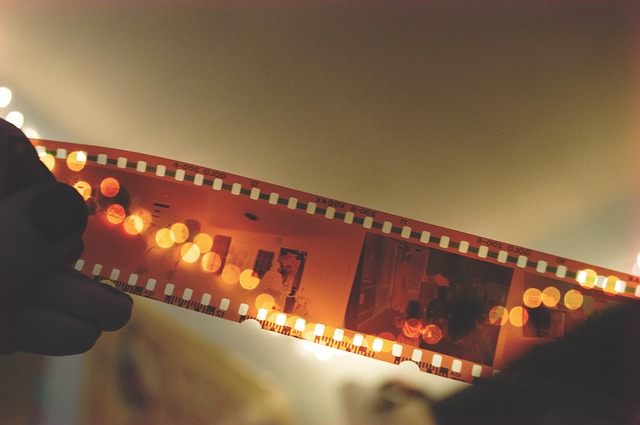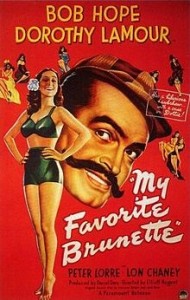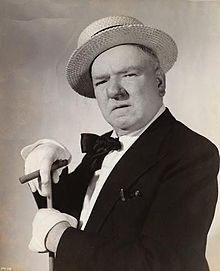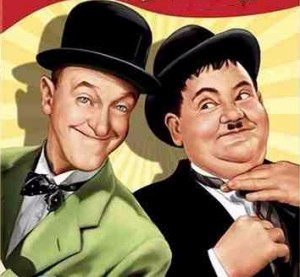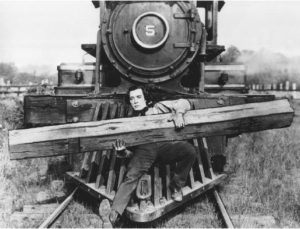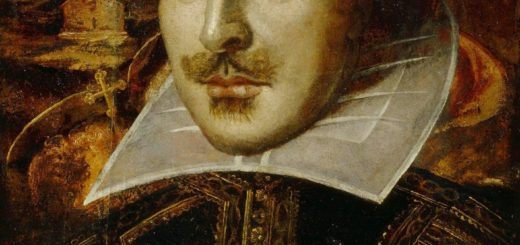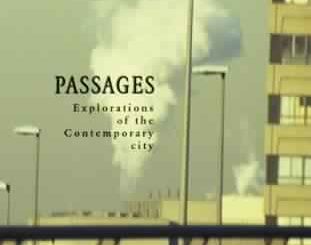Great Movies Online : Comedy
Here’s the best comedies, full-length movies that you can download right now – or watch online for free – in the “Community Video” section of Archive.org (formerly know as “Open Source Video”). They’re from the biggest names in comedy, offering some of the funniest scenes ever filmed, and they’re waiting online just to make you laugh.
The Three Stooges
Curly, Moe, and Larry deliver a raw slapstick comedy, where their bickering and scheming inevitably leads to bashing each other with pipes and shovels (and sometimes, even pies). But there’s fun, fast-paced plots — and a variety of settings — and now you can sample four of their comedies for free online.
Disorder in the Court
This was one of the trio’s earliest movie — offering a chance to see young Curly in action. He’s a witness at a murder trial, but by the time it’s over Curly’s demolished the witness stand, while Moe and Larry play a game of tic-tac-toe on the pants of the public defender. Curly baffles the pompous prosecuting attorney during the classic “remove your hat” routine, and before it’s all over, Moe’s actually swallowed a harmonica. It’s one gag after another, with a lively pace and high spirits.
Malice in the Palace
It’s 1949, and magically the Stooges turns up running a Middle Eastern restaurant. While they’re dropping plates and spilling food, they also stumble across a gang of Egyptian jewel thieves – but the dangerous sub-plot just gives them new targets for their slapstick comedy. This time there’s a different actor in the mix (Shemp Howard) but the gang still tumbles around through a pretentious palace while they try to they sneak past its guards and retrieve a valuable diamond. Moe and Larry had worked together for more than 20 years when they filmed this movie, and by now their comedic timing is absolutely perfect.
Sing a Song of Six Pants
This time there’s a dangerous bank robber on the loose, and The Three Stooges are running a tailor’s shop. (“New and 2nd Hand Clothes Cheep,” reads a sign in their window — promising “cleaning, pressing, and altercations.”) Of course there’s hot irons and a steam press — which Moe uses to cook pancakes — but soon the bank robber’s goons join the mayhem. They’re trying to retrieve the combination for a safe — their next target — but in the end, it’s the Three Stooges who come out ahead.
The Brideless Groom
You’ll inherit five hundred thousand dollars — if you get married within the next 48 hours. That’s what Moe tells Shemp at the beginning of this 1947 comedy, but unfortunately, he can’t find the right woman. This is one of the few Stooges comedies with a big part for a female actress — Shemp gives singing lessons to an adoring student named Miss Dinkelmeyer — and she fits right in with her ridiculous attempts at an operatic aria. Eventually she agrees to marry Shemp — who unfortunately drops the wedding ring into the piano — and before the ceremony can be completed, a massive fight breaks out between all the gold-digging woman in town.
Three Stooges Episodes
It’s like the ultimate Saturday morning matinee, with four Stooges comedies played back to back in one long, glorious movie. Press the play button and you’re set for over an hour — leaving you free to roll on the floor with laughter, to slap everyone in the room, or to indulge in your own version of a Three Stooges drinking game. (Every time Moe slaps Larry, everyone has to take a sip.) It’s the four movies described above — Disorder in the Court, Malice in the Palace, Sing a Song of Six Pants, and The Brideless Groom. But there’s something that’s almost decadent about having them all rolled together into one single movie.
Bob Hope
Bob Hope lived for over 100 years, making audiences laugh for over half a century on the radio, on TV shows, and in the movies. His career began on-stage with hundreds of live shows in American vaudeville, where he’d perfected the art of delivering a zingy one-liner. But soon he’d combined this expert timing with a winning character — that cocky coward who somehow always finds himself in real trouble. And now four of Hope’s best movies are available for free online, letting audiences continue laughing through the 21st century with a master of comedy.
The great Hope was never better than this 1947 movie where he’s tangled up in a complicated mystery. Hope plays a wannabe detective who gets drawn into a real investigation by Dorothy Lamour, and two menacing henchmen — played by Lon Chaney Jr. and Peter Lorre — give the twitchy comedian something to be nervous about. Woody Allen once named this rollicking comedy as one of the movies that gave him “pure pleasure,” and it captures the comedian at the peak of his career. And best of all, the last joke in the movie ends up getting delivered by Bing Crosby!
Road to Bali
It was one of America’s favorite comedy teams: Bing Crosby and Bob Hope. The smooth-voiced crooner and the squirrelly comedian drifted from one exotic locale to another, always falling into a complicated adventure, and always somehow managing to bump into Dorothy Lamour. But the real laughs came from the jokes along the way, as the two actors refused to take their own movie seriously, ad-libbing wisecracks, speaking directly to the audience, and rolling through a romp that was always hiding a few surprises. There were seven wonderful movies, spread out over 22 years, but by 1952 they had the formula down pat. In The Road to Bali, the two are shipwrecked on a deserted island, where they both fall in love with a royal tropical princess — played by Dorothy Lamour.
Mickey Rooney
Mickey Rooney became the biggest box office star three years in a row — while he was still a teenager. The short comedian was the Michael J. Fox of the 1930s, playing a too-confident teen who was cocky but endearing. And MGM crafted some very funny scripts, where he sometimes gets the setback deserves — and sometimes finds a plucky way to come through.
Love Laughs at Andy Hardy
Rooney played the character “Andy Hardy” in 16 different movies filmed over 20 years — including several with Judy Garland — but in the second-to-last movie, he’s a grown man returning from the war. In Love Laughs at Andy Hardy, he’s hoping to finally propose to his home-town sweetheart. But of course, there’s still one setback after another…
Charlie Chaplin
He’s been called a comic genius — and he’s one of the few silent performers who can truly be called icon. His personna is universally recognized — he’s the little tramp with the derby hat, the cane, and the baggy pants. He performed broad slapstick stunts in the character of a heart-tugging underdog, a simple child-like man with a kind, warm heart. Recognized as one of Hollywood’s giants of movie comedy, it’s a real treat to watch some of his greatest performances online.
The Gold Rush
Even though he’s a legend of silent comedy, one of his best comedies remains “The Gold Rush”. Imagine two prospectors in a chilly shack in Alaska — unaware that it’s teetering on the edge of a cliff. (The floor tilts, things start to follow gravity, and Chaplin obvliously moves them back into place — until he realizes how much trouble he’s in!) Chaplin could be silly and poignant in the same moment, and “The Gold Rush” showcases all the pathos of his “little tramp” character. (With no food to eat, Chaplin makes a meal out of his boot, savoring the laces as though they were strands of spaghetti.) And this movie also includes one of Charlie Chaplin’s most famous scenes, where he tries to simulate a dance by humbly using two rolls on the end of a fork to represent his shoes!
Kid Auto Races in Venice
It’s the very first time Chaplin donned his tramp costume — the baggy hat and the cane — as he visits the famous auto races as a spectator, and gets in the way of just about everybody. It’s not just the racers, but the cameramen trying to film them. But Charlie’s character has a great time in his first on-screen appearance — which was filmed 97 years ago — and the audiences who watched him had no idea how popular he’d be nearly a century later.
Shoulder Arms
It was 1918 when Charlie Chaplin made this war comedy – about a lowly private who dreams of somehow winning a military victory. “With the help of a French girl he captures the Kaiser and the Crown Prince,” reads a succinct description at IMDB.com, which adds “and then … fellow soldiers wake him from his dream.”
A Night in the Show
Poor Charlie just wants to watch a vaudevile show, but instead he stumbles into a fight with the conductor of the orchestra! It’s fun to watch the great Chaplin make a movie about going to the movies, and in this film the biggest obstacles for his character are the other members of the audience!
In the Park
There’s slapstick scufflers during a sunny day in the park, as Charlie confronts a pick-pocket, a hot dog vendor, and a quarreling pair of lovers. Interestingly, in this movie Charlie’s character has to contend with another tramp character — who’s trying to pick Charlie’s pocket!
A Day’s Pleasure
You’d think a day off would be easier, but Charlie’s family has to contend with his Ford Model T (which is falling to pieces). There’s a funny traffic jam and a mad dash for the pleasure boat that’s about to leave the dock. Is it a parody of life in the suburbs — or just another glorious example of slapstick comedy?
The Bowery Boys
It all started when Humphrey Bogart made a gritty melodrama called Dead End about a poor neighborhood — which included a gang of street toughs (including Leo Gorcey). The actors came straight from a New York stage production, but they proved so likeable that MGM launched them into their own series — which lasted for another 20 years. With comical Brooklyn accents, the characters were originally called “the Dead End kids,” then “The East Side Kids,” but they were soon re-named in their most popular incarnation as “The Bowery Boys” — which also included legendary comic actors Huntz Hall and Bobby Jordan. It’s still funny — and oddly inspiring — to see Hollywood’s version of fast-talking New Yorkers, fearlessly moving through a world of marks, stuffed shirts, and occasionally the police.
Let’s Get Tough
In this 1942 movie, Muggs and Glimpy make their own contribution to winning World War II by exposing a gang of saboteurs lurking in New York City. Released just six months after the attack on Pearl Harbor, the movie shows the gang getting caught up in a mystery. But fortunately, they’re able to solve it with some good advice from a friendly neighborhood police officer named Pops.
Kid Dynamite
It’s always fun to see these characters back in action, but this 1943 movie also makes some interesting references to the ongoing war and other signs of the time. (One character eventually enlists in the army, and at one point, there’s even a jitterbug dance contest.) The fiesty gang is about to enter a big boxing match — until Muggs ends up getting kidnapped. They’re fighting for the East Side/West Side championship — though eventually they end up fighting each other!
Bowery Blitzkrieg
Back when they were still called “The East Side Kids,” they filmed this melodramatic comedy-drama where one of their gang flirts with the idea of becoming a full-fledged criminal gangster. He’s got a promising boxing career ahead of him — if he’ll only stay in school — but it’s refreshing to see his moral lessons being delivered by his low-life friends from the neighborhood.
‘Neath Brooklyn Bridge
A man’s been murdered, and there’s a woman in his apartment — who, of course, gets befriended by the Bowery Boys. They take her back to their clubhouse (where they hide her from the police), but soon they’re being framed for the murder themselves by a scheming gangster, thanks to their own incriminating fingerprints. There’s a few brushes with the police — what comedy would be complete without them? — but of course, it all ends happily. The guilty man is arrested, and the boys can finally get back to their normal Brooklyn routine.
W.C. Fields
He’s one of the most famous characters from the glory days of Hollywood — remembered for a straw hat, a rascally scowl, and a big, round nose. He was a grand poseur, a doddering man with a lilting voice that comically tried to be ingratiating. (“Ah, yes, my little chickadee…”) But he was already a famous vaudeville performer by the time his oversized personality made it into the movies, and some of his most famous comedy routines were finally committed to film in some of the first talking pictures ever made.
The Golf Specialist
This 1930 movie finds Fields confronting the greatest foil of his comic career — children — but it also preserves one of his signature routines. As Fields prepares to hit a golf ball, building the tension with his own grandiose but silly patter, he faces a never-ending series of interruptions. Before he can tee off, he’s plagued with malfunctioning golf club, and then a pesky caddy, who then rustles some noisy wrapping paper, which soon dislodges a pie to the ground… (Which W.C. Fields then ends up stepping into.) But throughout all the hijinx, he keeps on talking — telling ridiculous lies and getting more and more exasperated.
The Pharmacist
Poor W. C. Fields escapes his troublesome family responsibilities by retreating to his job as a neighborhood pharmacist — where he runs a bootlegging business on the side. Unfortunately, there’s the police get embroiled in a gun fight with a criminal — right outside his store! (Fields fans will be reminded of one of the comedian’s greatest films — Going My Way — since this is where Fields’ character of the world-weary shop-keeper first got its start.)
Pool Sharks
Filmed nearly 100 years ago, in 1915, this silent movie was the very first film to star W. C. Fields. It preserves some of the moves from his famous “pool cue” routine (after a set-up in which two men agree to play a game of pool to determine which one of them will get to date the woman they’re both competing for). In one trick shot, Fields breaks the racked-up billiard balls — only to see them roll around the table (in stop-motion animation), returning to exactly the same position where they’d started! A crowd of spectators cheers on the antics, and it’s fun to see a great comedic performer demonstrate that he already knows how to light up the screen.
The Fatal Glass of Beer
Set in the Yukon, this comedy parodies the sentimental Hollywood melodramas, as it’s scoundrelly FIelds’ himself who plays the supposedly gentle father waiting for his wayward son to return. (It’s in this movie that he delivers his famous line of melodrama — “It ‘aint a fit night out for man nor beast!”) Fields feigns melancholy as he tells his story to “Officer Postlewhistle of the Canadian Mounties,” and even sings bits of his family saga while accompanying himself on the dulcimer. Fields recalls that it was “that fatal glass of beer” which lured his son into a wasted life in the big city — though of course Fields was a legendary drinker himself, so it’s all played strictly for laughs.
The Dentist
Fields returns to the golf course again in this movie, but then settles down to a new set of predicaments — the patients who come to his dental practice! This movie was produced by Mack Sennett, and he manages to flesh out the comedy routines with the skeleton of a plot and some supporting characters. But Fields steals the show once again with his perfectly-timed comedy, including slapstick stunts that will make you laugh and wince at the same time. It’s a favorite early film for fans of W.C. Fields, and according to the movie’s description at Archive.org, “The scene where he extracts the woman’s tooth may be one of the funniest he made.”
Laurel and Hardy
They’re probably the most famous comedy team of all time — the two child-like men in bowler derbies, one fat and bossy, one skinny and innocent. They always seemed endearingly helpless as they fluttered their ties — though behind the camera, Stan Laurel was an acknowledged genius at the art of filming slapstick comedy, and Oliver Hardy’s timing and facial expressions made him the perfect comic foil. Some of their films have fallen into the public domain, which means they’re now available at Archive.org, preserving the team’s comedy for future generations. Their faces are synonomous with comedy itself — so here’s your chance to see them in action.
The Flying Deuces
In one of the most far-fetched plots they ever filmed, the two men join the foreign legion to help Oliver forget a failed romance. Before the movie’s over, they’ve faced a firing squad, the challenge of stealing an airplane, and — in the movie’s final scene — reincarnation. (After which Oliver Hardy delivers his trademark line. “Well, here is another nice mess you’ve gotten me into!”) Fans of the comedy team also remember this as the film where Oliver Hardy — who had a beautiful tenor voice — breaks into a gentle rendition of “Shine On, Harvest Moon” — and soon he and his partner can’t resist breaking into a comically-delicated soft-shoe dance.
Mud and Sand
Ever wonder what Laurel was like without Hardy? There’s a remarkable 1922 comedy in which Laurel does his own parody of recent romantic swashbuckling movie. In this movie he plays a character named not Rudolph Valentino, but “Rhubarb Vaselino” — a matador (just like in Valentino’s “Blood and Sand”). There’s melodramatic threats to his life, both in and out of the ring, which leads one of Hollywood’s first spoofs to its sardonic conclusion. “If you want to live a long full life, cut out the bull!”
Utopia
This isn’t your typical Laurel and Hardy comedy. Instead, it’s a political satire, as the duo are shipwrecked on an island (along with a beautiful stowaway). Oliver Hardy becomes the island’s president, but soon uranium is discovered, and suddenly they’re besieged with interest from the nuclear powers of the world. Towards the end of this 1951 comedy, their island faces a violent revolution, but fortunately the pair are swept away to sea — to another island elsewhere in the ocean…
Buster Keaton
There’s amazing stunts, performed by an unforgettable character — the man who elevated silent comedy to an art. Film historians still revere “the great stone face” for his masterful technique, both on camera as a performer, and behind the camera as a director. But more importantly, for over 90 years, his movies have been making audiences laugh.
And you can join them, by watching some of his greatest films online.
The General
It’s one of the 10 best films of all time, according to Roger Ebert — and Buster Keaton always believed it was one of his best movies. A steam locomotive engine gets stolen during the Civil War, and its engineer grabs another engine to chase it down the railroad tracks. When it was filmed in 1927, it contained one of the most expensive movie scenes ever shot — two locomotives attempting to cross a burning trestle bridge — and
it’s based on a true story. (Keaton even hired 500 extras to play the Union Army.) All the excitement is balanced by some masterpieces of slapstick comedy — but this time, it’s perfectly integrated into a great story.
Steamboat Bill, Jr.
This comedy actually made movie history twice. It contains one of Buster Keaton’s most famous
stunts — when a cyclone loosens the entire front of a building, which collapses dramatically around the actor, who miraculously was standing where the window was. (Reportedly, the camerman looked away during the filming, afraid he’d see the comedian being crushed!) And the movie’s storyline — about the son of a riverboat pilot — ultimately inspired the plot of Mickey Mouse’s very first cartoon, Steamboat Willie.
Cops
Imagine what would happen if an entire police force was searching for you? Keaton’s innocent, of course, but he’s been mistaken for a bomb-throwing anarchist, and only his clever slapstick stunts can keep him from being sent to jail. Keaton makes one narrow escape after another, and the movie concludes as a throng of black-uniformed cops swarm the door where Keaton’s entered at the police station — and he’ll have to use the fantastic wit behind his great stone face if he’s going to save himself one more time.
The Playhouse
In this legendary comedy, Buster Keaton plays more than 20 different characters — including every member of a theater’s orchestra, and every single member of its audience. When the dancers take the stage, they’re all Buster Keaton, who also plays the all the performers — including a 9-member vaudeville act. There’s more surprises — exactly what is going on? — and Keaton ends up pursuing one of two identical twins backstage, trying to remember which one he’s actually chasing!
Parlor, Bedroom, and Bath
Keaton’s character can’t get married until he finds a fiance for his older sister — so he tries to pass off a shy neighbor as an infamous playboy. (Interestingly, Keaton filmed this movie in his own mansion in Beverly Hills!
Neighbors
Keaton is a young man in a poor neighborhood who loves the woman in the apartment behind him. Their family’s don’t approve, and their attempts to see each lead to a lot of well-choreographed slapstick comedy. One viewer at Archive.org wrote that “The part at the end with the three guys on on the other is pure magic!”
One Week
Keaton is the groom in a newlywed couple who receive a baffling wedding gift — a portable house — which can be assembled in just one week.
Scarecrow
When he falls into a hay thresher, Keaton steals the clothes off a scarecrow. But before the movie’s over, he’s mistakenly proposed to a farmer’s daughter — and then ends up fleeing in a high-speed motorcycle chase.
The Boat
Recreational boat has never been this exciting. Buster tears the front off the dockhouse, and destroys his family’s car, but eventually he gets his boat out to sea — only to caught in the middle of an ocean storm (and some very funny slapstick stunts).
The Blacksmith
He shoes horses and he fixes cars — but he also gets into a funny fight with the regular blacksmith (which he pulls off with his usual acrobatic grace.) But by the end of this movie, Buster’s managed to destroy a beautiful 1922 Rolls Royce. A humor sidenote: it was a real-life gift that Keaton received from his in-laws!
Convict 13
Buster Keaton is a dandy on the golf course who somehow winds up in…prison! It’s a case of mistaken identity, but soon there’s a jail break going down. And along the way, Keaton mixes in some of his most famous physical stunts — including at least one that he’d first performed in vaudeville with his father!

